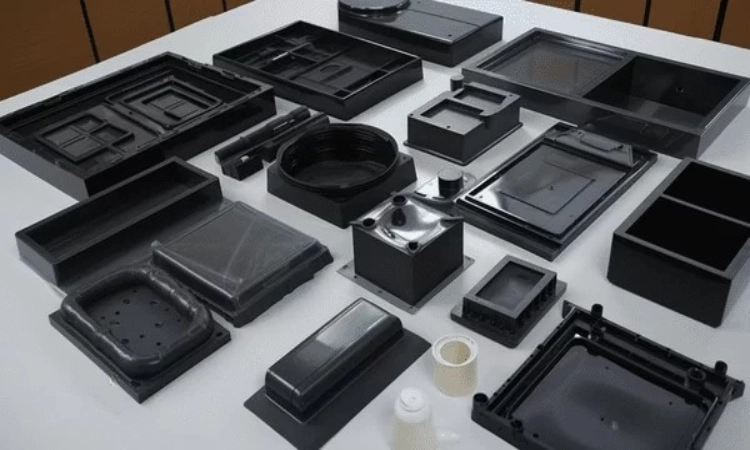Common Mold Materials Used by Manufacturers in China
The choice of mold material is crucial for achieving the best results in manufacturing, especially for vacuum forming molds and thermoforming molds. In China, manufacturers use various materials, each offering unique properties that can cater to different production needs. Whether you’re looking for custom vacuum forming molds, thermoforming tools, or bespoken vacuum forming molds, selecting the right material ensures the durability and precision of your product. In this article, we’ll explore some of the most commonly used materials in mold manufacturing in China.
Aluminum: The Standard for Efficiency and Precision
Aluminum is the most widely used material in the creation of vacuum forming molds and thermoforming molds. As a versatile metal, it offers excellent thermal conductivity, making it ideal for vacuum forming molding machines. The material’s lightweight nature allows for faster mold creation and ease of handling. It’s especially popular among vacuum forming molds manufacturers because of its cost-effectiveness and ease of machining. Aluminum thermoforming molds also provide a high degree of precision, making them suitable for both low and high-volume production runs. Custom thermoforming molds made from aluminum can be used for a wide range of applications, from packaging to automotive parts.
Steel: Strength and Durability for Heavy-Duty Applications
For high-strength and long-lasting molds, steel is the material of choice. Known for its superior durability, steel molds are commonly used for thermoforming molds intended for heavy-duty production. Steel thermoforming molds can withstand high temperatures and pressures, making them ideal for industries like automotive and electronics, where high performance and durability are essential. The material’s robustness is a key reason why thermoforming molds suppliers often recommend it for customers who need to produce large quantities of items with consistent quality. The high initial cost of steel molds is typically justified by their extended lifespan and ability to handle complex mold designs without degradation.
Copper: Ideal for Heat Transfer Efficiency
Copper is used in vacuum forming tools and thermoforming tools where rapid heat transfer is critical. As a highly conductive material, copper is an excellent choice for applications that require molds to heat up quickly and cool down efficiently. It is often employed in the production of vacuum forming molds China due to its capability to enhance production speed and reduce cycle times. Copper molds are favored for their ability to produce precise and smooth surfaces, making them suitable for vacuum forming mold design. Though more expensive than aluminum, copper’s benefits in terms of efficiency and quality often make it the preferred material for high-end, custom projects that require precise temperature control and smooth finish.
3D-Printed Molds: Revolutionizing the Industry
One of the most innovative trends in mold production today is the use of 3D printed vacuum forming molds. 3D print vacuum form mold technology allows manufacturers to create highly detailed and complex mold designs that would be impossible or cost-prohibitive with traditional methods. Vacuum forming 3D printed molds are gaining traction among vacuum forming molds suppliers due to their flexibility and rapid production time. These molds are particularly useful for prototyping and short-run production, where traditional metal molds may be too expensive or time-consuming. The ability to create bespoken vacuum forming molds with 3D printing allows businesses to quickly test and iterate designs, leading to faster time-to-market for new products. Furthermore, vacuum forming tools manufacturer companies are increasingly utilizing 3D printing for custom designs, offering clients more affordable and efficient options for their mold needs.
Choosing the Right Material for Your Mold Needs
Selecting the appropriate mold material is essential for ensuring that the vacuum forming molds China meet production requirements while staying within budget. Materials like aluminum, steel, and copper each have their advantages depending on the specific application. For rapid prototyping and low-volume production, 3D printed molds are revolutionizing the industry. As the demand for high-quality vacuum forming molds and thermoforming molds continues to grow, manufacturers in China are leveraging these materials and technologies to produce top-quality molds that help businesses achieve their production goals efficiently and cost-effectively. Whether you’re working with a thermoforming molds manufacturer or a vacuum forming molds supplier, the key is to understand the material’s properties and how they align with your product’s needs.
In the ever-evolving world of mold manufacturing, China stands at the forefront of adopting innovative materials and techniques. Whether you’re seeking vacuum forming molds for intricate product designs or custom thermoforming molds for large-scale production, choosing the right material can significantly impact the quality and efficiency of your final product. By understanding the strengths of materials like aluminum, steel, copper, and 3D-printed molds, businesses can make informed decisions that drive production success.

